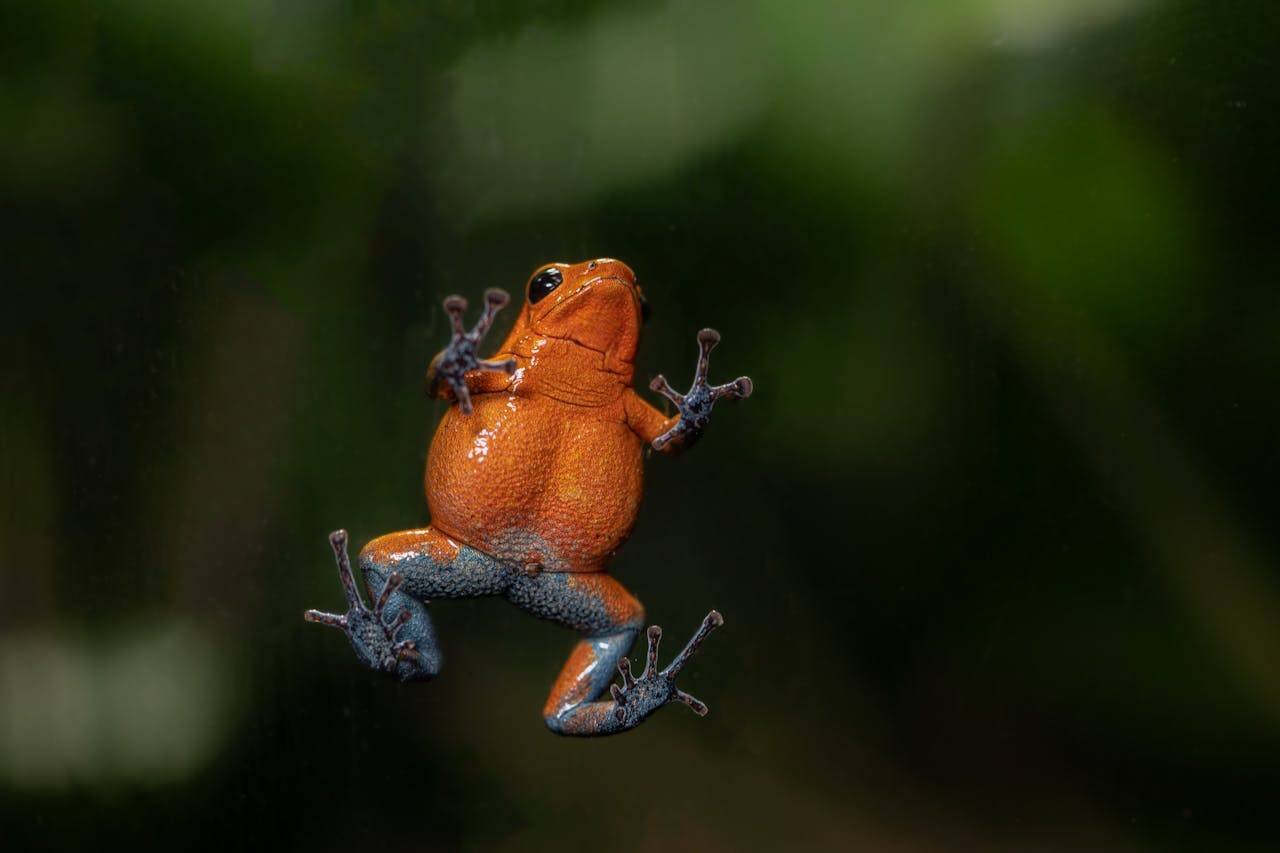The Strawberry Poison Dart Frog, scientifically known as Oophaga pumilio, is a captivating amphibian renowned for its vibrant color and fascinating behavior. Found in the Central American rainforests, this species is celebrated for its small size and dazzling variety of color morphs. Let’s explore the intriguing world of the Strawberry Poison Dart Frog and what makes it a standout species among amphibians.
Characteristics and Appearance
The Strawberry Poison Dart Frog is notable for its bright red body, often complemented by blue or black legs—a unique combination that garners attention. However, this species exhibits polymorphism, with over 30 known color variations depending on geographic location. This aposematic coloration serves as a warning to predators of its toxic nature. Adult frogs typically measure around 0.7 to 1 inch in length, making them small but strikingly colorful.
Habitat and Distribution
These frogs inhabit the humid rainforests of Central America, particularly in Costa Rica and Panama. They thrive in moist environments with abundant leaf litter and small water sources necessary for reproduction. The rich biodiversity of their habitat provides ample food and shelter, supporting their vibrant populations.
Toxicity and Diet
The toxins present in Strawberry Poison Dart Frogs are derived from their diet of alkaloid-rich insects found in the wild. These toxins serve as a defense mechanism against potential predators, making the frogs an important part of the ecological balance.
Keeping Strawberry Poison Dart Frogs as Pets
Acquisition and Care
Strawberry Poison Dart Frogs can be kept as pets by those knowledgeable about their specific needs. It’s crucial to purchase them from reputable breeders who ensure the frogs are captive-bred, thereby supporting conservation efforts by reducing demand for wild-caught specimens.
- Housing:
These frogs require a terrarium that can replicate their natural humid environment, complete with live plants, hiding spaces, and a continuous source of fresh water. - Diet:
In captivity, they should be fed a diet of small insects such as fruit flies, small crickets, and springtails. Without the specific diet of their natural environment, captive frogs do not develop the same level of skin toxicity. - Legal and Ethical Considerations:
Check local wildlife regulations and ensure proper permits are in place. Commitment to ethical pet ownership is essential, emphasizing the importance of supporting captive breeding and understanding the frog’s ecological significance. - Longevity:
With proper care, Strawberry Poison-Dart Frogs can live for 10 years or more, requiring a long-term commitment from their owners.
Conservation Status
While not currently listed as endangered, habitat loss and environmental changes pose significant threats to their populations. Conservation efforts include habitat preservation and the promotion of sustainable captive breeding programs.
The Strawberry Poison Dart Frog, with its remarkable colors and ecological significance, offers a glimpse into the fascinating biodiversity of the Central American rainforests. As both a captivating pet and a vital part of their ecosystem, these frogs require informed care and a commitment to conservation. For those interested in exploring more about poison dart frogs, our comprehensive article on other dart frog species delves into their unique traits and diversity.
If you’re in the mood for more light-hearted content, immerse yourself in our collection of frog jokes and frog-themed fairy tales. These engaging readings not only entertain but also deepen our appreciation for frogs and their magical presence in both nature and storytelling. Join us on a journey to discover the world of frogs, whether through scientific exploration or the joyful wonders of tales and laughter.
FAQs About Strawberry Poison Dart Frogs
Where do Strawberry Poison Dart Frogs get their toxins?
These frogs obtain their toxins naturally from their diet of alkaloid-rich insects in the wild, which they lack in captivity, making them non-toxic.
Can Strawberry Poison Dart Frogs be kept as pets?
Yes, they can be kept as pets, but it requires expertise and responsible care. They should be sourced from reputable breeders who practice captive breeding.
What kind of habitat do these frogs need in captivity?
They require a humid terrarium with live plants and constant moisture, mimicking their natural rainforest environment for optimal health.
Are Strawberry Poison Dart Frogs endangered?
While not currently endangered, they face threats from habitat destruction and environmental changes. Conservation efforts focus on habitat preservation and captive breeding.
How long do Strawberry Poison Dart Frogs live?
With proper care, they can live up to 10 years or longer in captivity.

